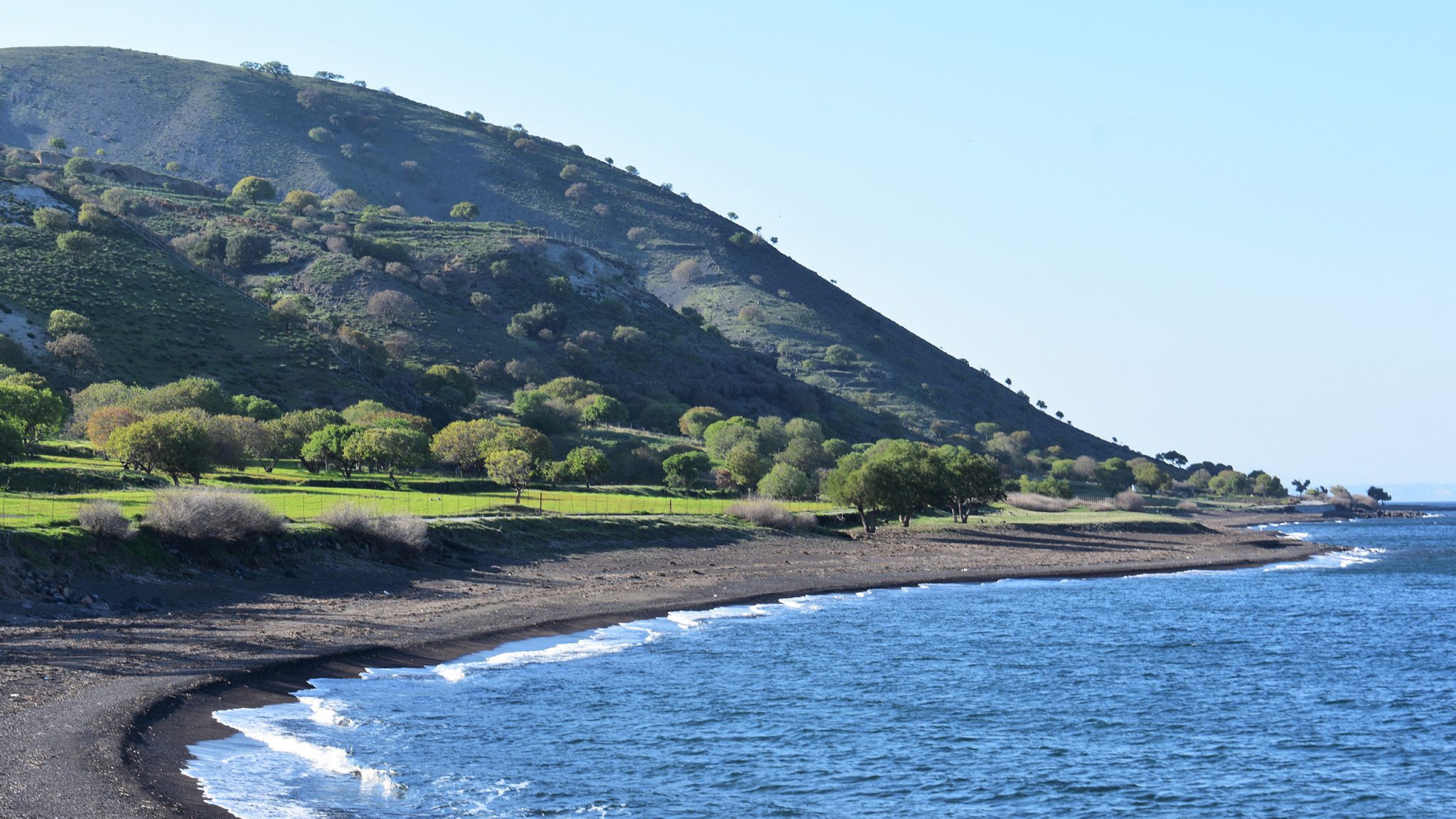
Start this route from the paved road leading to Emporio, 1500 meters past the junction for Paloi (Site 8.0). Here, dramatic deposits of hydrovolcanic tuffs of andesitic composite are visible, with characteristic sedimentary structures of cross-bedded layers. Numerous volcanic bombs of glassy obsidian andesite have left their marks in the fine-grained gray ash. Next to them, andesitic lava flows and scoriae are visible. Continue towards Paloi, where at the eastern end you can visit Panagia Thermiani (Site 8.1), built within the ruins of the Roman Baths, and the hot spring located there.
It is reported that this site was used by Hippocrates as a hydrotherapy center. Opposite Thermiani stands the recently renovated but non-operational imposing building of the Pantelidis Baths. Walking from there towards Cape Katsouni, you will encounter the gray and black ash from the latest eruptions of Kyra and the last lava flows of basaltic andesite from the first terrestrial cone, covered on their roof by red scoriae (Site 8.2).
Then leave the paved road and follow the beach to Cape Katsouni. The path is almost cut off by an uplifted lava front that forms a natural cave right on the coast (Site 8.3). Once you pass the cape, you will see a splendid cross-section on the steep coast (Site 8.4). At its base are the lavas and ash from the latest eruptions of the first terrestrial cone of Nisyros, covered by a red solid soil that had developed over them (paleo-soil). Following are the layers of pumice from the first catastrophic eruption, then again a second paleo-soil, and subsequently the layers of pumice from the second catastrophic eruption. Characteristically, here, in the cross-bedded layers of the ash, the force of the incandescent clouds that carried the volcanic ash here is evident.
Climbing to the top of the hill at Katsouni, you will observe the entire area covered by the white ash from the latest major eruption of Nisyros. Higher up, towards Emporio, you will see a spectacular lava flow covering the eastern slopes of the volcano and a feeding vein of it.
Continue, retracing your steps towards Lies. Along the beautiful sandy coast, you can expect to be accompanied by small groups of free-ranging cows that usually bathe in the sea, while the "cyan" (copper-pheasants) will be disturbed by your presence if you are in Nisyros during their visit. Reaching the southern end of the large beach, the paved road ends, and you take the path that will bring you into contact with the ash layers from the eruptions of "Kyra" (Site 8.5). Observe the impressive impact marks of volcanic bombs in the white layers of fine-grained ash. At the highest point of the path, you will encounter layers of black scoriae of andesite.
Collect beautiful pieces of scarn—do not remove them from their appearance, as the best are already scattered on the ground due to erosion—and enjoy at the end of the path the beach of Pachia Ammos. Sink your feet into the soft sand, dip into the cool waters, and observe the structures of the rhyolitic lava flows of Nikia that define the southern end of it.
If you do not take the return route to Paloi and still have the energy to walk, there is a path from here leading to the monastery of Panagia Kyra, which is worth visiting. This route can also be done in reverse, starting from the Kyra Monastery and ending in Paloi.

